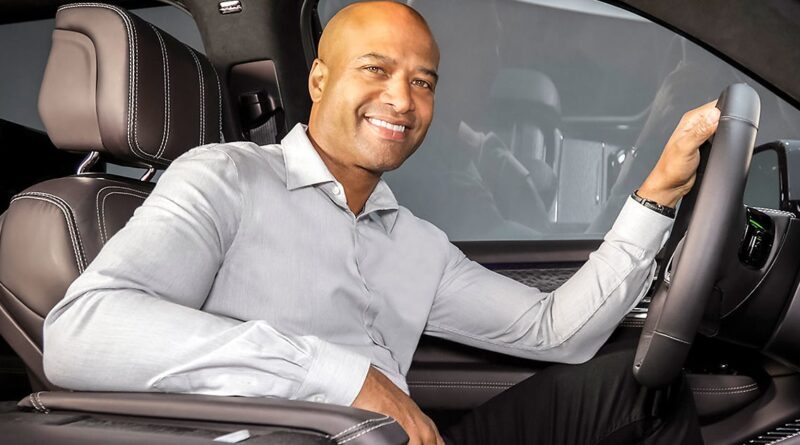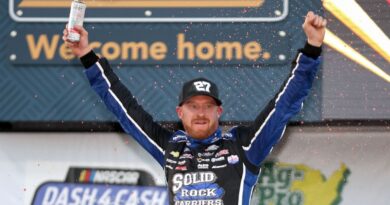Stellantis designers use concepts as brand ‘manifestos’
NEW YORK — The Stellantis design team has been busy crafting concept cars that show where each of its brands is headed in the age of electrification.
One of the latest creations, the Ram 1500 Revolution concept that debuted in January, is setting the tone for the truck brand ahead of its foray into the world of zero-emission haulers. Its design language can be seen in the tuning-fork lighting scheme of the electric 1500 REV that was shown this month in New York and is slated to go on sale in late 2024.
Stellantis design chief Ralph Gilles said the Revolution concept is being used as a discussion piece to see what the public wants in electric pickups. It has features such as removable third-row jump seats and a rail attachment system that allows the seat and console to be repositioned for greater cabin flexibility.
Other recent Stellantis electric concepts include the Chrysler Airflow crossover and the Dodge Charger Daytona SRT Banshee.
Gilles said concepts — or “manifestos,” as he called them — sometimes are necessary to establish new directions for brands. Gilles, 53, spoke with Staff Reporter Vince Bond Jr. during the New York International Auto Show about the importance of concept cars and some of the design team’s thinking behind the 1500 REV. Here are edited excerpts.
Q: This has been a really busy time for your design team with all of the EVs and concepts, so how does it feel to be at the cutting edge for the company?
A: It’s exciting. We’ve got a lot of brand design going on and really enjoy the art of packaging, the art of recommunicating these different objectives for each brand. We relish it, but at the same time we’re mining the future as well. What you see is work that started a while ago, and there’s more on the way.
You’ve been doing some really bold concepts over the past year and a half. What’s the main benefit for you as a designer?
We call them manifestos. The Ram [Revolution] is one of them, the one we showed a few months ago. It was important to establish our North Star — here’s the vehicle that embodies everything we want to try to do, attempt to do and will do in the future, and, one by one, you’ll see elements of it raining down on the current product. In fact, the concept influenced the production vehicle in real time and we knew full well people would be like, “Why do you have both? Why do you have production and concept?”
The concept is a cauldron of everything that we’re thinking of and we want to get it out there to get the reaction, so it is touring the country. We’re using that as a discussion piece to see what people really want because we can’t do absolutely everything. We could, but it wouldn’t be, let’s say, affordable. We want to see what resonates from that as we craft the next generation, but right now we’re very proud of the current one, so it’s a lot. We’re doing the future, the present and the distant future all at the same time.
It feels like you’re doing more concepts than other companies right now.
We used to be known for that, so, in a way, we’re getting back into it, but it’s a thoughtful thing. They’re not just gratuitous concepts for the sake of concepts, and we’re not going to see every year a guaranteed amount of concepts. It’s just that there is a time when a manifesto piece is necessary to establish a new direction for the brand.
Was there any pressure to make the REV we saw today look more like the Revolution concept?
There was. The front end wasn’t going to look like that. When we all looked at the Ram Rev concept, we stopped and went back and embodied the production one with a lot of those elements: the front, the rear. The way we executed the frunk was better.
What stands out the most for you on the REV?
I think how good it turned out to be. I think when people drive it, they’re going to really like it. We took everything that’s good about today’s truck, which is a fantastic truck, and added what we needed to make it a very, very good and credible EV.
I’m very proud of the new light signature; the tuning fork front end has been well accepted. It’s distinctive, it’s ours, no one else has it and it’s also functional. It moves everything around so we can enjoy that new frunk.
What was the inspiration for that tuning fork design?
The logo itself. The logo is also new. It’s kind of hiding in plain sight, but we have a brand-new logo, the first time we’ve redone it in probably 15 years, the three letters of Ram. We wanted to almost bring attention to it, literally everything leads to the Ram.
What was your thinking behind making the REV look more traditional than the concept?
I don’t think we see it that way. It wasn’t about making it more traditional. It’s about evolving it on today’s architecture. And then the REV is the future, right? So it’s really the other way around. It’s more embodying it with as much distinctive technology as we can because it’s a young truck; the 1500’s very young. The conceptual one is a calling card to where we’re headed.
For the production REV, what was the most challenging thing to get right?
The challenge is more on the engineering side. We wanted a truck that checks many boxes: easy to use, overdelivers on performance, clean, attractive, smart looking and has a sense of value. When you look at it, I hope it will command the value that we need to make the whole business case work. The interior is stunning. When you open the door, it’s like, “There you go.” That’s Ram. Ram has established this incredible attention to detail, and now we’ve integrated technology and detail in one beautiful package.
Source : Autonews.com




